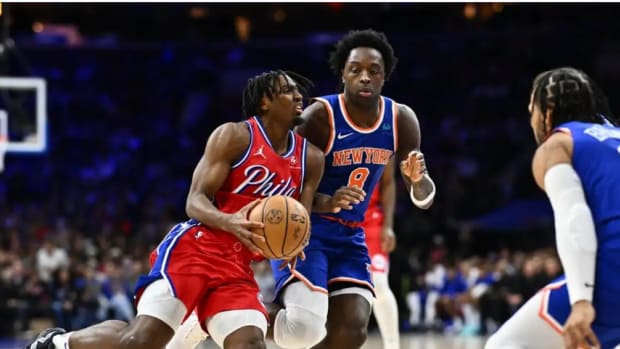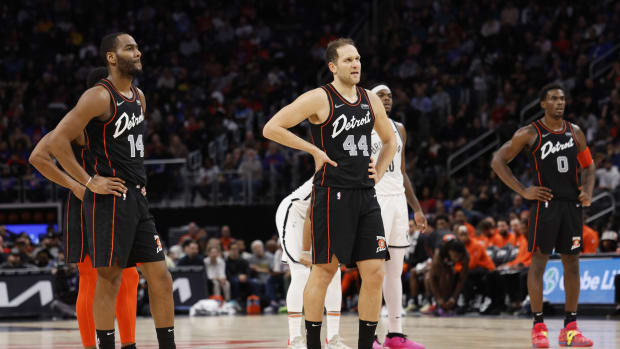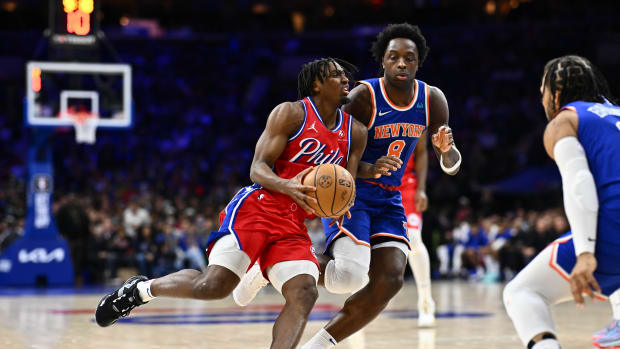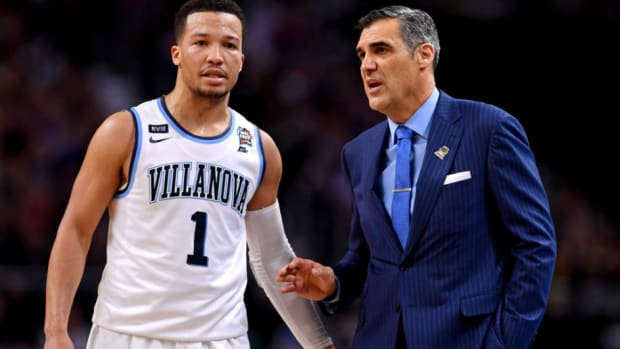Making Life Easier for the Knicks Young Ball-Handlers
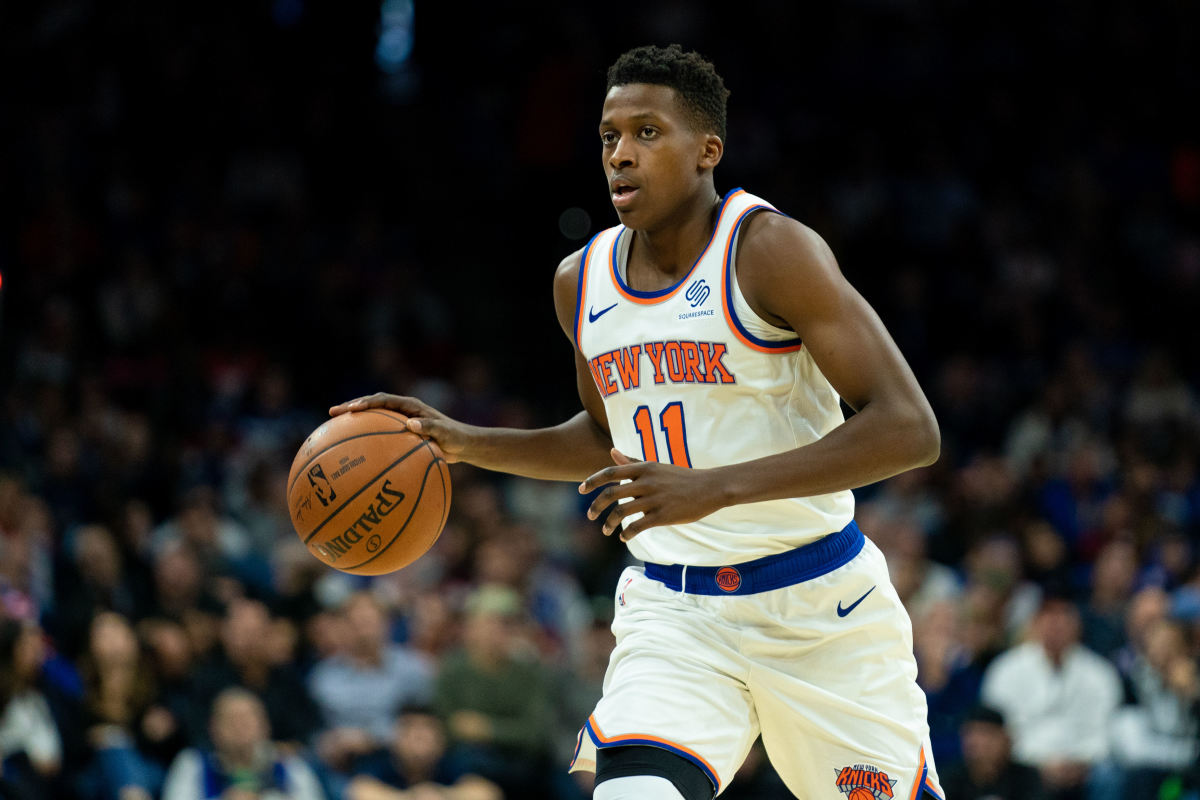
Through eight weeks of action, there isn’t much positive praise that can be doled out to these Knicks. For fans, the season has already turned the corner from “maybe this team can do something!” to “please just let the kids play well, and pass the wine.”
On both of these fronts, there has been one shining beacon of hope thus far. Who it is shouldn’t come as a surprise to anyone, at least not anyone who stuck with this team through the dreary final months of last season, when a precocious kid from Chalmette, Louisiana at least gave everyone a reason to watch.
Thus far this year, Mitchell Robinson is averaging 1.58 points per possession as a pick and roll roll man. That is the highest number in the league among players seeing at least two such possessions per night, and an improvement on his nearly league-leading 1.46 figure from last year.
But because Knicks fans can’t have nice things, as with everything that’s good about this team, like Hydra herself, there are two or three bad things that spring up in its place.
Let’s start here: despite his otherworldly proficiency as a roll man, Mitch is only averaging two such possessions per night, which is tied for 40th in the league. It’s as if the Knicks are bringing a gun to a knife fight but with an empty clip.
Perhaps even worse, despite the threat that Robinson provides, the Knicks haven’t been able to take advantage of it in a way that opens up easier scoring opportunities for their ball handlers in the pick and roll.
It starts with their prize rookie. Going into Monday’s action, there were 68 players averaging at least four possessions per game as the pick and roll ball handler. Of those, only three were averaging fewer than .70 points on such plays: Darius Garland (0.66), Justise Winslow (0.54), and RJ Barrett (0.60).
New York’s more traditional ball handlers aren’t faring much better. Elfrid Payton has stayed out of the above group by the skin of his teeth, averaging just 0.72 points per possession as a pick and roll ball handler, while Frank Ntilikina (0.62 average on 2.2 possessions per game) and Dennis Smith Jr. (0.45 average, 3.1 possessions) have been even worse on lesser volume.
Do the Knicks have the most inept hall handlers in the league (kindly hold your chuckles, thanks), or is there is a simpler, kinder explanation for the above?
While the New York's point guards are arguably the least talented group in basketball (at least on offense), there’s likely more to it than that. As usual with this team, when we’re talking about offense, it comes down to spacing. The Knicks, you may have noticed, have very little of it.
“But wait,” you might say, “the Knicks are an above average team from deep this year! They should shoot more threes!” On its face, this is true. According to Cleaning the Glass, New York is shooting an even 36 percent from long range on the season, which ranks 13 in the NBA. If they simply took more of them (they’re currently 25 in frequency of 3-pointers taken), then shouldn’t this solve all of their problems?
If they keep trotting out the same lineup combinations and running the same plays, that’s highly doubtful. The Knicks have lost all 11 games this season when they’ve taken over 30 triples. Of those 11, only four saw them shoot above 31 percent from deep: their season opener versus San Antonio, the one-possession losses to Boston and Brooklyn early on, and Saturday against Indiana.
In short, teams are daring them to take “bad” threes – ones shot by subpar shooters - and it hasn’t worked out in their favor. The guys who can actually make these shots are well-covered, while the men who can’t are left firing away to their heart’s content. This is what smart teams do, and in 2019, most teams in the league are smart (present company excluded, at least until Saturday afternoon). As a result, the spacing on pick and rolls has suffered, and we end up with some of the desultory numbers from above.
We may be seeing a change though, albeit small ones, that could help the young players improve their opportunities in the pick and roll as the season progresses and get Mitch more opportunities.
On Saturday night, of the Knicks 31 attempts from deep, 22 were taken by those who most consider their four of their five best shooters from long range: Marcus Morris (4-for-8), Damyean Dotson (2-for-8), Kevin Knox (2-for-4) and Bobby Portis (0-for-2). That works out to 36 percent, which is right at New York’s season average, and a perfectly fine number given enough volume. Dotson in particular was ready to fire away whenever he saw the ball – a welcome change which, if it eventually makes its way into scouting reports, should help loosen things up.
Meanwhile, brickity brick brick-layers Julius Randle (23.8 percent on a staggering 80 attempts) and Dennis Smith Jr. (29 percent on 31 looks) only took one long-ball each, and Randle’s was a wide open look from the corner.
Finding creative ways to get his shooters more open looks seemed to be a priority in Mike Miller’s first game. The Knicks set cleaner screens and ran several actions we haven’t seen much of, at least not successfully executed ones. If the rotations continue to trend towards going smaller and more shooter-heavy, things should get even better.
We already saw some positive signs, but with more work to be done:
In the first play here, the Knicks get lucky that T.J. Warren - not the most aware defender, which is ironic considering who he's guarding on the play - sticks to Julius Randle when he should be helping prevent the drive by Frank. He doesn't, and the seas part.
In the second play, both Sabonis and Holiday (correctly) help off Randle and Ntilikina, respectively, which seems to form a brick wall. Thankfully, RJ Barrett makes a perfect pass and Mitchell Robinson is a human pogo stick, so it doesn't matter. Ideally, from here on in, the Knicks won't need to worry about poor defense and/or perfect plays to get their kids valuable experience.
If the rest of this season truly is all about development (spoiler alert: it is), putting the ball handlers in pick and roll situations that they can actually succeed in has to be among the highest priorities. If that happens, not only should Mitchell Robinson's roll frequency increase, but the Knicks' guards should be able to get more practice with basketball's most utilized play in more optimal situations.
The season might not have gone how many hoped, but it doesn't make what happens from here on in any less important.

